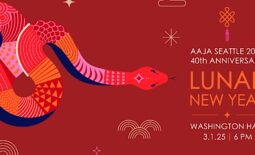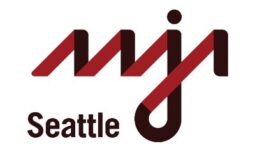AAJA goes to Vancouver
Dr. Sun Yat-Sen Classical Chinese Garden in Vancouver.
Overview
On Sept. 18 and 19, about a dozen AAJA members visited Vancouver, BC, and met with local Asian-Canadian journalists. The purpose of the trip was three-fold: To establish ties with fellow journalists concerned with diversity in the media, gain a better understanding of diversity issues in Vancouver and support local journalists interested in forming a professional association with goals similar to AAJA.
Sanjay Bhatt, president of the AAJA Seattle chapter, proposed an AAJA trip to Vancouver after an email exchange with CBC Early Edition associate producer Jennifer Chen, who missed being a part of AAJA when she lived in New York. Over a few conference calls, they hashed out an itinerary for visits to the CBC, Vancouver Sun and University of British Columbia’s Graduate Journalism School. Chen also brought in Alden Habacon, manager of diversity initiatives for CBC Television, and he arranged for a Lunar New Year-style dinner at a Vancouver restaurant and a walking tour of Chinatown. These two were instrumental in making our stay pleasant and worry-free, and we deeply appreciated the hospitality from everyone.
AAJA was well represented on the trip: National President Sharon Chan and National Treasurer Candace Heckman participated, as did Athima Chansanchai, who serves on the national advisory board. The other Seattle chapter members on the trip were AAJA Seattle president Sanjay Bhatt, chapter secretary Venice Buhain, Lori Matsukawa, Larry Blackstock, and Yvonne Leow. AAJA Portland chapter secretary Peter Wong also attended.
That newsrooms in Vancouver would have difficulty achieving parity with their city’s population seems hard to fathom: The City of Vancouver has a population of more than 570,000 residents, of which nearly half are Asian. Chinese Canadians comprise a whopping 30 percent of the city’s residents. Another 6 percent are South Asian and 5 percent are Filipino. The City of Seattle has a population similar in size to that of Vancouver, but only 13 percent of Seattle residents are Asian.
To see more photos of our trip, go to our Flickr group site.
Meeting the Executives
Our first meeting was on Friday morning at Fairchild Media Group in Richmond, a suburb with a population of about 173,500, of which about two-thirds are of Asian descent. Little did we know that one out of five Vancouver residents is Chinese, or that Fairchild TV is the largest Chinese-language broadcast news operation in Canada.
We met with Fairchild Media’s President, Joseph Chan, and the television network’s news director, Winnie Hwo. At least 30 percent of their network’s programming is Canadian content. The network’s business model – subscription only – is healthy: The media company plans to launch two new channels next year. Other Canadian broadcast operations simply translate English-language news into Chinese, whereas Fairchild employs Chinese-fluent producers and anchors who cover the news through their lens. As Winnie put it, Fairchild TV brings a “Chinese flavor” to news coverage that the audience can’t get from CBC and other news suppliers.
Group photo at Fairchild Media Group
Later that morning, we toured the CBC Vancouver headquarters. In fact, we were the first group to tour the newsroom since it opened over the summer after a major renovation. We had a chance to pop into a live broadcast on Radio 3, a Canadian music radio channel for emerging artists, and producer Lauren Burrows let us give a shout-out to her listeners.
We had lunch with Wayne Williams, news director for CBC in British Columbia, and Lorna Haeber, head of current affairs programming for CBC in British Columbia. They said that improving diversity at CBC was a “top-down initiative” that involved educating staff about their audience’s demographics, bringing in stakeholder groups to share stories missing from coverage, and hiring more reporters from ethnic communities.
The pool of minority journalistic talent is small, Haeber said, partly because some cultures don’t encourage their young to enter the profession. Recent layoffs haven’t helped: CBC lost some diverse journalists because all the newest hires were people of color. Haeber told us that each department sets diversity goals annually, and Habacon said he is developing new tools for measuring diversity in news coverage at CBC.
Inside a Radio 3 studio: AAJA members Lori Matsukawa and Athima Chansanchai react to the live radio host giving a shout-out on the air to our AAJA tour group.
On Friday afternoon we toured The Vancouver Sun, which employs about 130 staff, the largest newsroom in Western Canada. Managing Editor Kirk LaPointe told us the paper has about 500,000 daily readers and competes with The Province, which is owned by the same company in an arrangement similar to joint operating agreements in the United States. But unlike their U.S. counterparts, Canadian newspapers biggest edition is published on Saturday, and their ad rates are based on readership, not circulation.
About 18 months ago, The Sun’s newsroom was reorganized around a central hub, a design that is also used by the Associated Press and some European newsrooms. The editors’ desks are in the newsroom center, and reporters sit on the fringes. Online, the Sun has about 60 blogs by community experts, about 25 Twitter feeds and 15 million page views a month. LaPointe said his organization struggles to create diversity in the newsroom because of low staff turnover (less than 1%). Still, we noticed at least three editors of Asian descent sitting around the hub at the 2:15 p.m. editorial meeting, including the photo editor and editorial page editor.
Group photo at The Vancouver Sun
We participated in a “New Frontiers” panel at the University of British Columbia’s graduate school of journalism and were welcomed by its director, Mary Lynn Young. Our moderator was the CBC’s Habacon, who is also the founder of Schema Magazine, an online magazine whose mission is “to reflect the most culturally mobile and complexly diverse generation of Canadians ever observed.”
Sharon Chan was the first panelist to speak, and she talked about the shifting landscape in U.S. journalism, challenges to diversity and how AAJA is helping members adapt. The other panelists were assistant professor Alfred Hermida, a co-founder of the award-winning BBCNews.com; Hwo, news director of Fairchild TV; Miyoung Lee, reporter/editor for CBC Television; and Craig Takeuchi, movies editor at The Georgia Straight, Vancouver’s alternative weekly.
CBC reporter Miyoung Lee and Fairchild TV News Director Winnie Hwo at the diversity panel at the University of British Columbia’s Graduate Journalism School.
Dinner with Asian-Canadian journalists
We had a 10-course dinner at Spicy Court on Friday night, an experience that Habacon jokingly referred to as our “wedding dinner.” The gathering of 50 Asian-Canadian journalists was historic, Habacon told us, in that never before had there been a reason for such a dinner. In Vancouver’s media market, the journalists are fragmented into smaller linguistic-based groups, such as one for Punjabis and another for Chinese. AAJA’s visit thus was a catalyst in bringing these journalists together.
Alden Habacon, manager of diversity initiatives for CBC Television, and AAJA President Sharon Chan at Spicy Court dinner that brought together 50 Asian-Canadian journalists.
The group included Nick Noorani, founder and publisher of the monthly Canadian Immigrant; Peg Fong, Western Canada bureau chief for The Toronto Star; Meera Bains, a Punjabi-speaking reporter/editor for CBC News Vancouver; Carolyn Ali, travel and food editor for The Georgia Straight; and Bowen Zhang, the Mandarin-speaking news anchor for Omni Television. Our delegation was split up so that there were at least two AAJA members at each table.
Chan and Bhatt presented gifts to Habacon and Chen at the end of the dinner. We presented them with chocolates made in Seattle and a pair of Seattle Times coffee mugs. Later, we reconvened at one of Vancouver’s great lounges for after-dinner drinks.
CBC reporter Tiffany Chong and Seattle Times multimedia intern Yvonne Leow hang out after dinner at the Regional Tasting Lounge in Yaletown.
Tour of Chinatown
Early Saturday morning we met at the New Town Bakery, where we enjoyed delicious baked and steamed buns. We set off on a 3.5-mile walking tour of Chinatown led by Andrew Yan of BTA Works, the R&D division of Bing Thom Architects. Like Seattle’s International District, this Chinatown has been home to many Asian communities: Japanese, Chinese, Sikhs, Filipinos and Koreans. The architecture of Chinatown reflects that diversity, such as the old Maikawa department store, Chinese-influenced recessed balconies, and dilapidated brick and wooden rooming houses built a century ago for laborers.
We were all struck by how Asian-Americans and Asian-Canadians have a shared history of being exploited and excluded by the majority society, such as the internment of Japanese during World War II, the barring of Chinese immigrants, and violence against Sikhs and other Asians who were perceived as stealing jobs from the white majority. The tour ended at the spectacular Dr. Sun Yat-Sen Classical Chinese Garden.
Group photo in Vancouver’s Chinatown.
Supporting Asian-Canadian journalists
Our visit culminated with a business meeting to discuss the needs of Asian-Canadian journalists in Vancouver and how AAJA can support their efforts. We heard from our hosts that there isn’t a strong sense of community among journalists, nor are there mentoring or professional-development workshops for journalists of color. Our hosts told us that an organization like AAJA, with its national reach and reputation among major media companies, could help Asian-Canadian journalists in their efforts to increase diversity in their newsrooms and coverage.
We encouraged them to become AAJA members, attend our national convention in Los Angeles and explained the process for becoming an AAJA chapter. The meeting ended with hugs, and we look forward to seeing our Asian-Canadian peers in Los Angeles in 2010 and in Detroit in 2011!
CBC Early Edition Associate Producer Jennifer Chen and Seattle Times reporter Sanjay Bhatt at our group’s wrap-up lunch.



